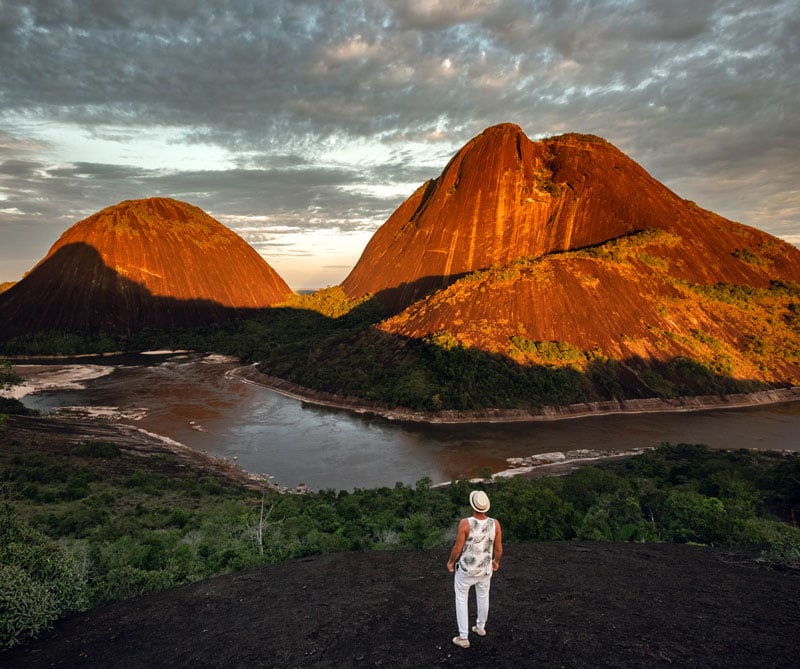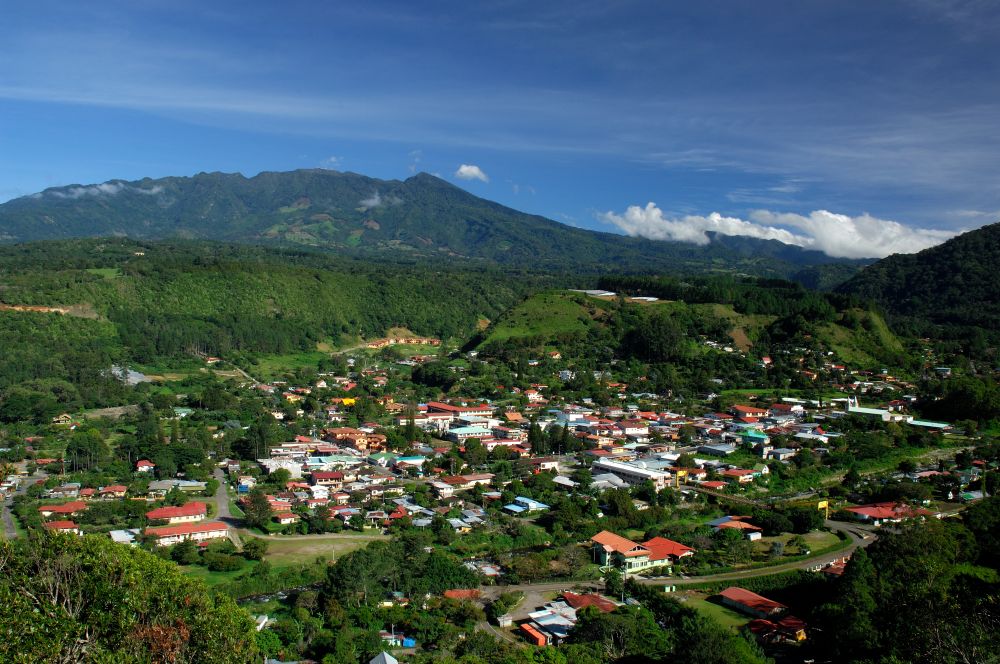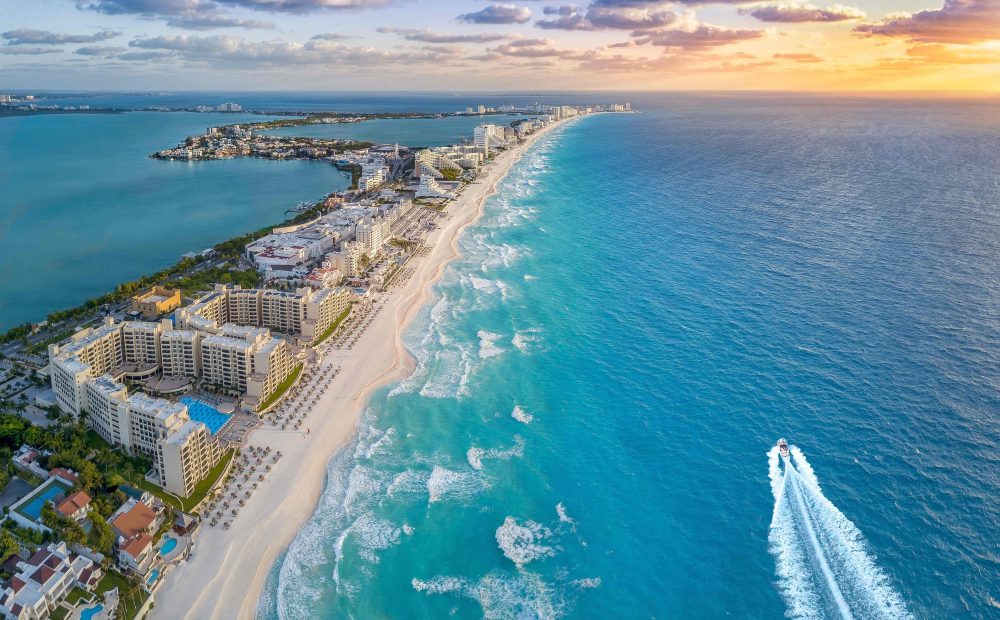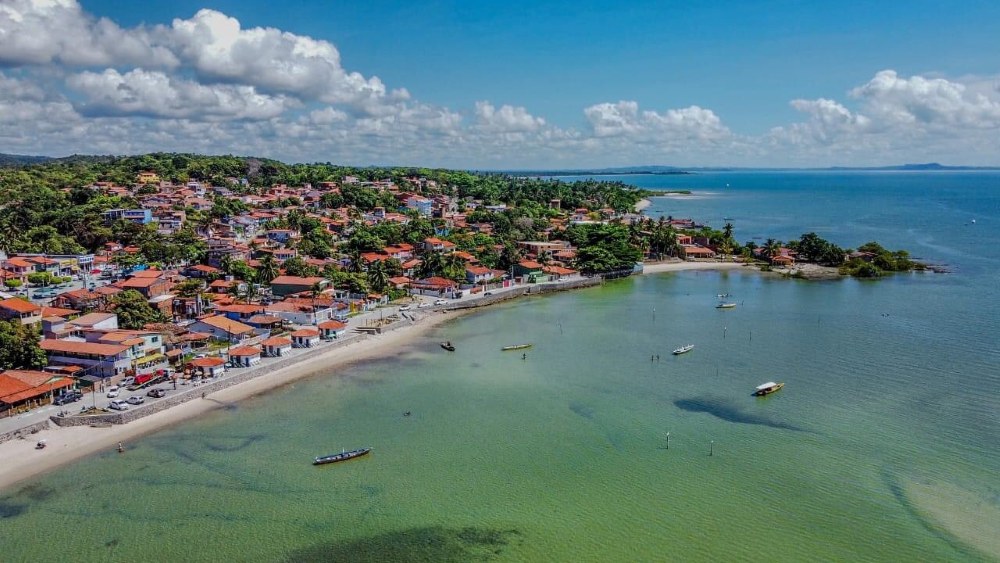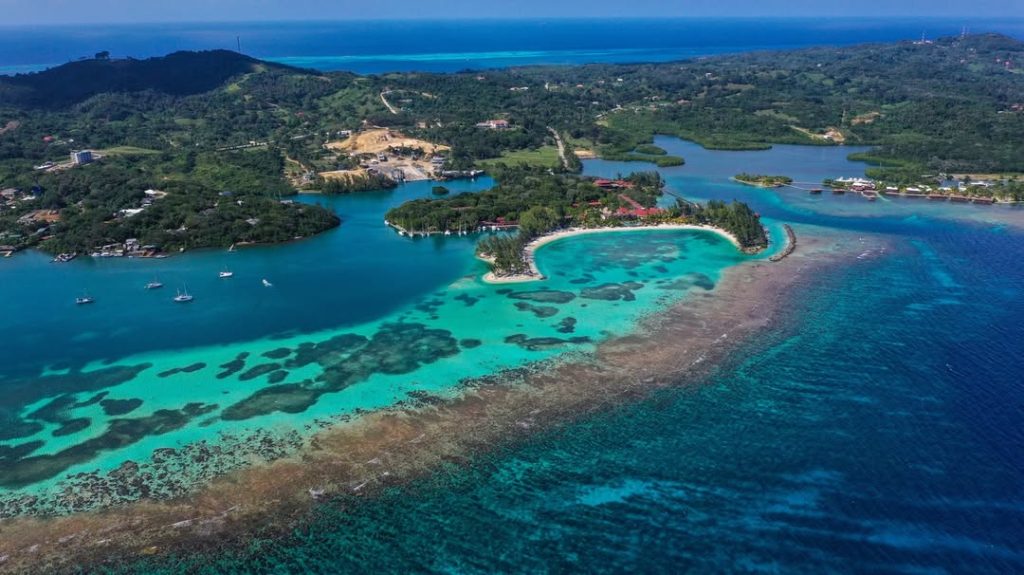Au cœur de la Colombie, dans le département de Guainía, se dressent les majestueux Cerros de Mavecure, des formations géologiques qui témoignent de l’ancienneté de notre planète. Ces montagnes -les plus anciennes de Colombie-, symboles de la beauté naturelle et de la diversité culturelle de la région, offrent un spectacle à couper le souffle et une immersion inoubliable dans la culture indigène locale.
Guainía : Terre de diversité et de culture
Situé à l’est de la Colombie, le département de Guainía – terre des grandes eaux – en langue Yurí– est une mosaïque de forêts amazoniennes, montagnes, rivières et plaines. Bordée par les frontières vénézuéliennes et brésiliennes, cette région abrite près de 30 communautés indigènes, dont les Puinave, Tukano, Curripaco et bien d’autres. Ces peuples, gardiens des traditions ancestrales, vivent en harmonie avec la nature, pratiquant l’agriculture, l’élevage, la chasse et la pêche.
Les montagnes : Fenêtres sur un monde ancien
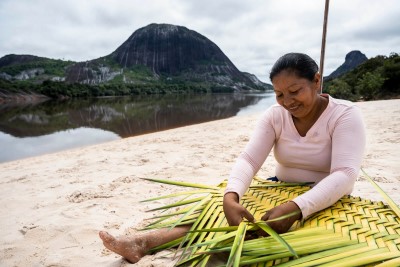
Les Cerros de Mavecure sont composés de trois montagnes principales : Mavecure, Mono et Pajarito. Le Cerro de Mavecure, accessible aux randonneurs accompagnés d’un guide local, offre une vue panoramique sur la jungle environnante. Bien que l’ascension soit exigeante, la vue depuis le sommet est une récompense inestimable.
Vivre l’authenticité à El Remanso
La communauté El Remanso, appartenant à l’ethnie des Puinaves, accueille les voyageurs au pied des Cerros de Mavecure. Séjourner ici, c’est plonger au cœur de la culture locale, déguster des mets traditionnels, découvrir des rites ancestraux, apprendre l’histoire des peuples anciens et se baigner dans la paisible rivière Inirida.
Les pétroglyphes de Guainía
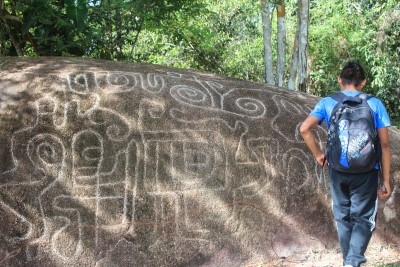
Le departement de Guainía abrite également des trésors historiques et culturels. Parmi eux, les pétroglyphes de la communauté de Coco Viejo se démarquent. Ces gravures anciennes, taillées en bas-relief sur d’énormes roches, sont des témoins silencieux des cultures ancestrales de la région. Selon la tradition orale des indigènes Curripacos qui habitent ce lieu, ces symboles gravés étaient des langages laissés par les “antigüeros”, les indigènes de l’époque pré-colombienne. Ces dessins millénaires offrent un aperçu fascinant de la vie, des croyances et des traditions des premiers habitants de Guainía.
Outre les montagnes, Guainía regorge de merveilles naturelles et culturelles, parmi elles voici quelques attractions incontournables :
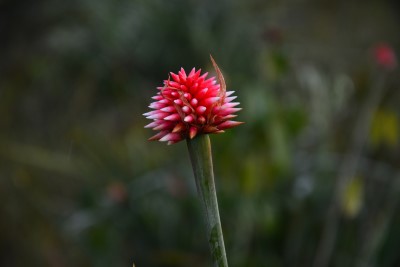
Estrella Fluvial del Oriente : C’est le point de confluence des rivières Inírida, Guaviare et Atabapo, qui se jettent toutes dans le puissant Río Orinoco. Ce site est reconnu pour sa richesse en biodiversité et sa signification culturelle.
Caño Sabana : C’est un ruisseau aux eaux rouges, où l’on peut se baigner et observer un phénomène naturel étonnant, la peau prend des teintes allant du jaune à l’orange.
Recherche de la Fleur d’Inírida : Symbole du département de Guainía, cette fleur endémique pousse uniquement dans les savanes inondables de sable blanc de la région.
Faune locale : La biodiversité de la région est impressionnante. Avec un peu de chance, vous pourrez apercevoir des dauphins roses, des loutres géantes, des caïmans et une multitude d’oiseaux.
Les Cerros de Mavecure ne sont pas simplement des montagnes ; ils sont le reflet vivant de l’histoire ancienne de la Terre, un témoignage de la richesse culturelle de la Colombie et un sanctuaire de biodiversité. En parcourant Guainía, on ne peut qu’être émerveillé par la symbiose parfaite entre l’homme et la nature, où traditions, paysages et faune coexistent en harmonie. Visiter cette région, c’est toucher du doigt l’essence même de la Colombie, où la nature et la culture s’entrelacent pour offrir une expérience inoubliable.

